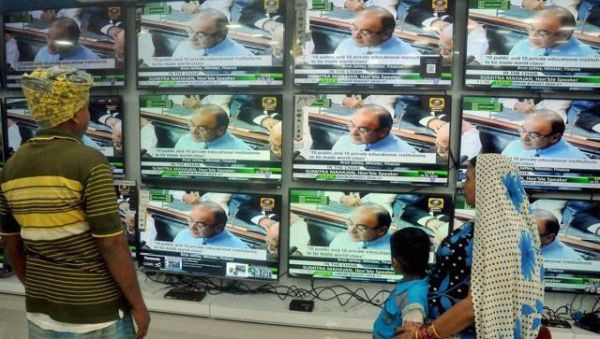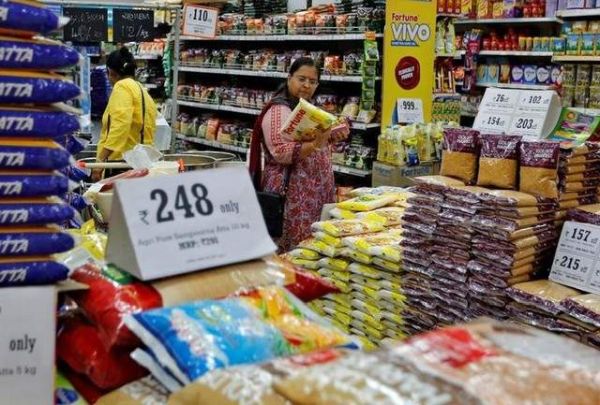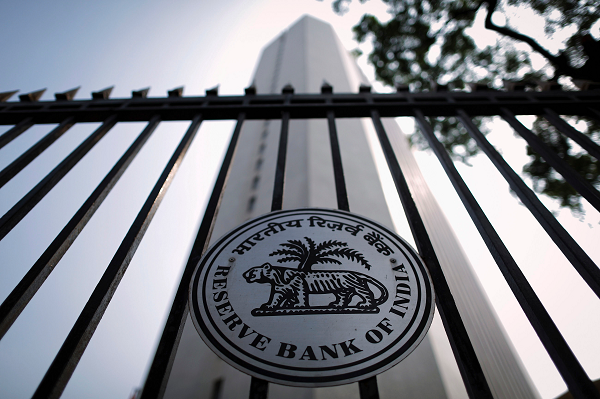
by admin | May 25, 2021 | Banking, Economy, Finance, Markets, News, Politics
 Mumbai : The Shiv Sena on Friday again attacked the BJP for demonetizing Rs 500 and Rs 1,000 bank notes in 2016, calling it a “butchering of the Indian economy” which it said even the Reserve Bank Of India (RBI) had conceded.
Mumbai : The Shiv Sena on Friday again attacked the BJP for demonetizing Rs 500 and Rs 1,000 bank notes in 2016, calling it a “butchering of the Indian economy” which it said even the Reserve Bank Of India (RBI) had conceded.
The hasty and ill-advised move was not ‘patriotic’ but created “economic anarchy” in the country as subsequent developments proved, it said in editorials in the party organs ‘Saamana’ and ‘Dopahar Ka Saamana’.
While announcing demonetization, Prime Minister Narendra Modi had promised that it would spell the end for corruption, black money, fake notes and terrorism, but the effect has been opposite, especially in the past two years.
“The RBI’s latest annual report says Rs 1.47 lakh crore, or 99.30 percent, of all the spiked notes have returned. Around Rs 10,000 crore have not come back into circulation. This means, a mountain was dug and not even a mouse came out, but the country’s economy was shattered for catching this elusive rodent,” the Sena said.
The result was that the country was facing an economic mess, the small and medium enterprises have been destroyed, the service sector was in crisis, housing industry was in doldrums, small and medium farmers were suffering, and scores of lives were lost in bank and ATM queues after demonetization, said the Sena.
Added to this was the fall of the GDP and the country’s pace of development, with the Indian rupee plummeting to its lowest levels in 70 years and terrorism continuing unabated.
Moreover, the government spent over Rs 15,000 crore in printing the new currency notes and Rs 2,000 crore to distribute them, Rs 700 crore to replace the existing ATM networks.
“However, despite the huge economic losses suffered, the government still continues to harp on ‘Vikaas’ and its attitude is akin to Nero fiddling while Rome burnt. Demonetization was a sheer ‘evil’ (aghori) measure,” said the Sena.
Targeting the RBI, the editorial said it was the custodian of the country’s wealth but the Governor (Urjit Patel) did nothing when it was being looted, for which he should be hauled before the courts.
“We were shown the dream that demonetization is a revolutionary step which will eradicate black money forever. However, hundreds of crore of black money of politicians are deposited in banks. A couple of Gujarat (cooperative) banks lead in this and some newspapers there had published the news of impending demonetization months in advance,” it pointed out.
The BJP’s ally at the centre and in Maharashtra said that those who opposed demonetization were treated as “traitors” but the truth is now revealed in the RBI’s (2017-18) annual report.
“For those who labelled (former PM) Manmohan Singh a ‘fool’, the reality is out and it is clear that demonetization was a fiasco. The RBI is saying so,” the editorial said.
—IANS

by admin | May 25, 2021 | Corporate, Corporate finance, Corporate Governance, Finance, News, Politics
 New Delhi : A day after the RBI revealed that 99.3 per cent of the demonetised currency was returned to the banks, Finance Minister Arun Jaitley on Thursday said the invalidation of the non-deposited currency was not the only objective of the noteban.
New Delhi : A day after the RBI revealed that 99.3 per cent of the demonetised currency was returned to the banks, Finance Minister Arun Jaitley on Thursday said the invalidation of the non-deposited currency was not the only objective of the noteban.
Jaitley said the larger purpose of the demonetisation was to remove the anonymity of the owner of cash and to move India from a tax non-compliant society to a compliant society.
“Was the invalidation of the non-deposited currency the only object of demonetisation? Certainly not. The larger purpose of demonetisation was to move India from a tax non-compliant society to a compliant society. This necessarily involved the formalisation of the economy and a blow to the black money,” he said in a Facebook post.
The Minister said the objectives of demonetisation have been achieved and explained when cash is deposited in the banks, the anonymity about the owner of the cash disappears.
“The deposited cash is now identified with its owner giving rise to an inquiry, whether the amount deposited is in consonance with the depositor’s income. Accordingly, post demonetisation about 1.8 million depositors have been identified for this enquiry.
Many of them are being fastened with tax and penalties. Mere deposit of cash in a bank does not lead to a presumption that it is tax paid money,” he said.
In March 2014, the number of income tax returns filed was 3.8 crore. In 2017-18, this figure grew to 6.86 crore. In the last two years, when the impact of demonetisation and other steps is analysed, the income tax returns have increased by 19 per cent and 25 per cent.
“This is a phenomenal increase,” he said, adding the number of new returns filed post demonetisation increased in the past two years by 85.51 lakhs and 1.07 crore, respectively.
Jaitley also shared data related to jump in advance tax. For 2018-19, advance tax in the first quarter increased for personal income tax assesses by 44.1 per cent and in the corporate tax category by 17.4 per cent, he said.
Further, he said the income tax collections increased from Rs 6.38 lakh crore in 2013-14 to Rs 10.02 lakh crore in 2017-18.
“The growth of income tax collections in the pre-demonetisation two years was 6.6 per cent and 9 per cent. Post-demonetisation, the collections increased by 15 per cent and 18 per cent in the next two years. The same trend is visible in the third year,” he said.
On Goods and Services Tax (GST), which was implemented post demonetisation on July 1, 2017, the Minister said there has been a rise of 72.5 per cent in the number of registered assesses from 66.17 lakh originally to 114.17 lakh today.
“This is the positive impact of the demonetisation. More formalisation of the economy, More money in the system, higher tax revenue, higher expenditure, higher growth after the first two quarters,” he said.
—IANS

by admin | May 25, 2021 | Banking, Corporate, Corporate finance, Economy, Finance, News
 Mumbai : The amount of banned currency notes that did not return to the system post demonetisation stands at Rs 10,700 crore, or 0.7 per cent of the old lot of notes, an RBI data showed on Wednesday.
Mumbai : The amount of banned currency notes that did not return to the system post demonetisation stands at Rs 10,700 crore, or 0.7 per cent of the old lot of notes, an RBI data showed on Wednesday.
This amount has been arrived at based on the Reserve Bank of India (RBI) annual report for 2017-18, after deducting the amount of Rs 15.31 lakh crore of high-value currency notes that returned to the banks, from the Rs 15.42 lakh crore worth such notes in circulation before the demonetisation of November 8, 2016.
A partial explanation for the missing Rs 500 and Rs 1,000 notes is provided by the report that out of the total fake notes detected at the RBI, their share during 2017-18 was higher at 36.1 per cent, compared with 4.3 per cent during 2016-17.
This was because of processing of a large volume of specified banknotes (SBNs) withdrawn from circulation by demonetisation, the report said.
—IANS

by admin | May 25, 2021 | Banking, Business, Commodities, Commodities News, Economy, Markets, News, SMEs
 New Delhi : Lower food prices eased India’s July retail inflation to 4.17 per cent from 4.92 per cent in June, even as it continued to rule over the Reserve Bank of India (RBI)’s medium-term inflation target of 4 per cent, official data showed on Monday.
New Delhi : Lower food prices eased India’s July retail inflation to 4.17 per cent from 4.92 per cent in June, even as it continued to rule over the Reserve Bank of India (RBI)’s medium-term inflation target of 4 per cent, official data showed on Monday.
However, on a year-on-year (YoY) basis, the Consumer Price Index (CPI) in July 2018 was higher than in the corresponding period last year, when retail inflation stood at 2.36 per cent.
According to the data furnished by the Central Statistics Office (CSO), the Consumer Food Price Index (CFPI) rose 1.37 per cent in July from 2.91 per cent in June 2018.
Product-wise, prices of milk-based products, eggs, meat and fish pushed the retail inflation higher on a YoY basis.
In contrast, deflation in the cost of vegetables, pulses and sugar capped the overall food prices.
Accordingly, the prices of milk-based products rose by 2.96 per cent, while cereals became dearer by 2.92 per cent and meat and fish prices recorded a rise of 2.26 per cent.
On the other hand, the category of “pulses and products” became cheaper by (-) 8.91 per cent and that of “sugar and confectionery” by (-) 5.81 per cent.
The sub-category of food and beverages during the month under consideration recorded a rise of 1.73 per cent over the same period last year.
Among non-food categories, the “fuel and light” segment’s inflation rate accelerated to 7.96 per cent in July.
Continuing with the reversal of accommodation begun in June, the RBI earlier this month again hiked its key lending rate by 25 basis points to bring the repo to 6.50 per cent citing upside risks to inflation.
Addressing the media on the hike in the repo, or the short-term lending rate for commercial banks, Governor Urjit Patel said its monetary policy committee (MPC) noted that the rise in retail inflation had continued for the third consecutive month.
“The decision of the MPC is consistent with the neutral stance of monetary policy in consonance with the objective of achieving the medium-term target for consumer price index (CPI) inflation of 4 per cent within a band of +/- 2 per cent, while supporting growth,” the RBI said.
The central bank, however, maintained its “neutral” stance on policy, as it has done over five previous bi-monthly policy reviews which allows it to move either way on rates.
Commenting on the CPI numbers, Deloitte India Lead Economist Anis Chakravarty said in a statement: “Inflation continued to remain fuelled by higher oil prices as increasing levels of core inflation, especially housing, clothing, and miscellaneous activities. The movement in food inflation has also increased and is likely to follow an upward trajectory due to MSP increase.”
“Given that inflation remains above the medium term target of 4 per cent and the scales are tilted to the upside, the recent increase in key policy rate may provide some respite,” he added.
—IANS

by admin | May 25, 2021 | Banking, Economy, Finance, News
 Mumbai : The Reserve Bank of India (RBI) on Wednesday raised its key benchmark lending rate by 25 basis point to 6.5 per cent in its third monetary policy review of 2018-19.
Mumbai : The Reserve Bank of India (RBI) on Wednesday raised its key benchmark lending rate by 25 basis point to 6.5 per cent in its third monetary policy review of 2018-19.
“On the basis of an assessment of the current and evolving macroeconomic situation at
its meeting today, the Monetary Policy Committee (MPC) decided to increase the policy repo rate under the liquidity adjustment facility (LAF) by 25 basis points to 6.5 per cent,” the RBI said in the monetary policy review statement.
“Consequently, the reverse repo rate under the LAF stands adjusted to 6.25 per cent, and the marginal standing facility (MSF) rate and the Bank Rate to 6.75 per cent.”
—IANS

 Mumbai : The Shiv Sena on Friday again attacked the BJP for demonetizing Rs 500 and Rs 1,000 bank notes in 2016, calling it a “butchering of the Indian economy” which it said even the Reserve Bank Of India (RBI) had conceded.
Mumbai : The Shiv Sena on Friday again attacked the BJP for demonetizing Rs 500 and Rs 1,000 bank notes in 2016, calling it a “butchering of the Indian economy” which it said even the Reserve Bank Of India (RBI) had conceded.



